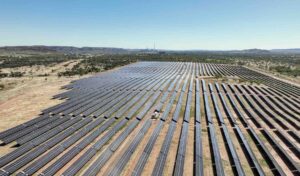US-based consultancy McKinsey & Company predicts that global primary energy demand will plateau after 2035, while electricity consumption will double until 2050, by which time renewables will account for more than 73 per cent of supply.
In its latest Global Energy Perspective, McKinsey also says that renewable energy account for over 50% of global electricity generation by 2035.
Long-term energy forecasts can be a dime a dozen at this time of the year as analysts and consultancies attempt to score headlines which will secure their workload through the year, and McKinsey’s came at roughly the same time as the more conservative BP Energy Outlook 2019.
McKinsey, however, doesn’t have to concern itself with shareholder confidence in its long-term fossil fuel interests, and its findings are a little more ambitious and hopeful for the renewable energy industry.
Its proposed energy mix has a large splash of yellow, representing solar, which shows remarkable growth from its current share of generation, which is currently minimal.
Global primary energy demand – which includes transport – is expected to plateau after 2035, according to McKinsey, despite strong population expansion and economic growth, thanks in large part to the penetration of renewable energy sources into the global energy mix and increased efficiencies.
Electricity consumption is nevertheless expected to continue to increase, doubling until 2050 according to McKinsey’s Global Energy Perspective Reference Case, driven particularly by increased demand in buildings and a shift toward electric vehicles.
McKinsey predicts renewables will make up over 50% of generation post-2035 marking what McKinsey expects to be “a clear trend break from historical fossil fuel-based generation.”
Conversely, with the substantial increase in intermittent resources such as wind and solar – which have been rapidly increasing their share of the global capacity mix and already accounted for over half of net capacity additions in the past few years – there will be a parallel increase in the need for balancing needs, especially when wind and solar generation reach a combined share in excess of 30%.
McKinsey also expects to see natural gas increase its share of global energy demand, the only fossil fuel which grows its share, but it too will begin to lose ground as it plateaus after 2035. Gas demand will therefore decline significantly in the long-term (post-2035), especially in the power sector, where its share of total demand will drop from 41% in 2015 to 33% in 2050.
Oil demand growth is expected to slow in the next decade despite historical growth of more than 1% each year and will lead to an expected peak in oil demand in the early 2030s at a volume of 108 million barrels per day
. However, McKinsey also lays out a potential “accelerated transition scenario” – boosted by increased electrification of transport and plastics recycling – which would see oil demand peak as far forward as 2025, with demand half of today’s levels by 2050.
However, McKinsey nevertheless acknowledges that “there is a need for new oil barrels … even in an accelerated transition scenario.”
Maybe the most far-reaching finding from McKinsey’s Global Energy Perspective Reference Case is the expected peak of global energy-related carbon emissions in 2024, which will then fall by around 20% between 2016 to 2050, driven “primarily … by a reduction in coal use, especially in China and the power sector.”
However, McKinsey concludes that a “1.5-degree or even 2-degree scenario remains far away,” and that to “get to a 1.5-degree scenario, far-reaching decarbonization or demand reduction is needed across all sectors.”











